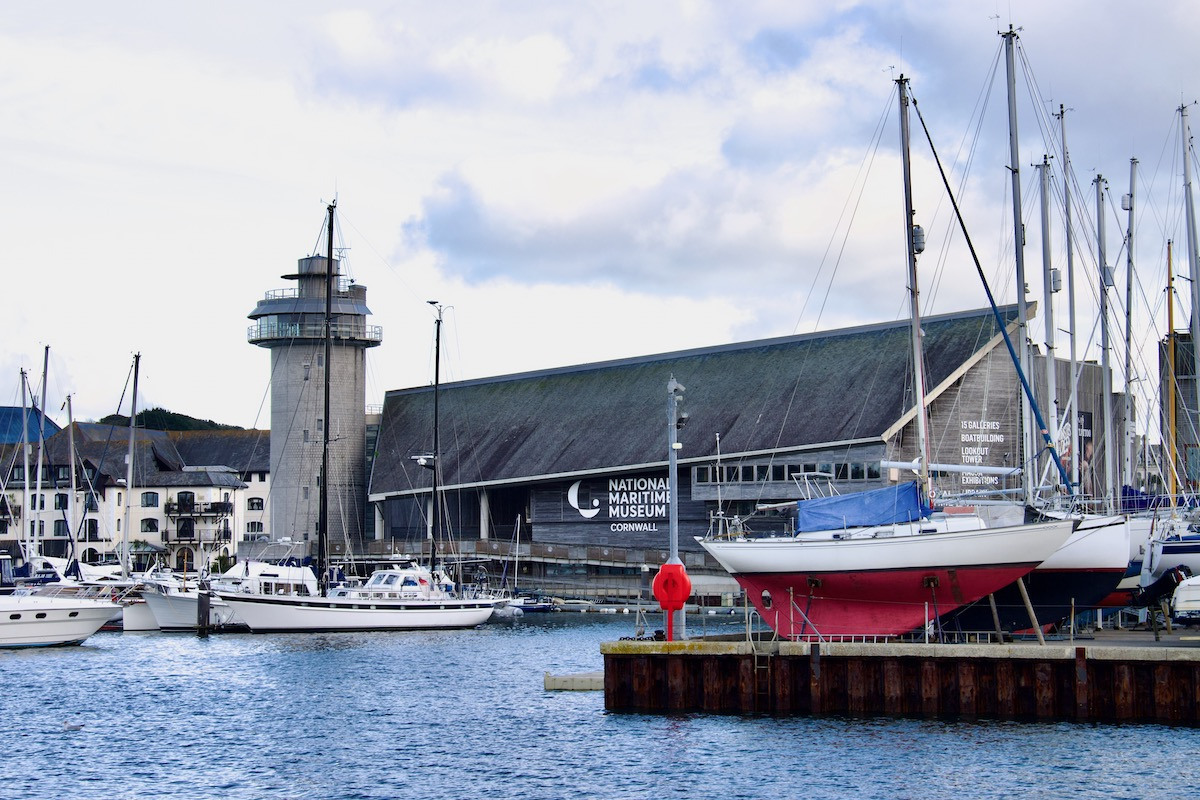
Once a smugglers paradise and now a holiday haven, Falmouth in Cornwall is home to a miscellany of attractions including Pendennis Castle and the National Maritime Museum.
Situated on the third deepest natural harbour in the world Falmouth has always had a strong connection to the sea. It started as a fishing village and blossomed into one of the most important ports in the British Empire. From 1688 to 1852 Falmouth operated as a Royal Mail packet station bringing in mail and messages from all over the British Empire. These wind-powered ships also carried goods and passengers generally arriving at the Custom House Dock. But eventually wind-power had to give way to the superior steam powered vessels and the packet service was closed.
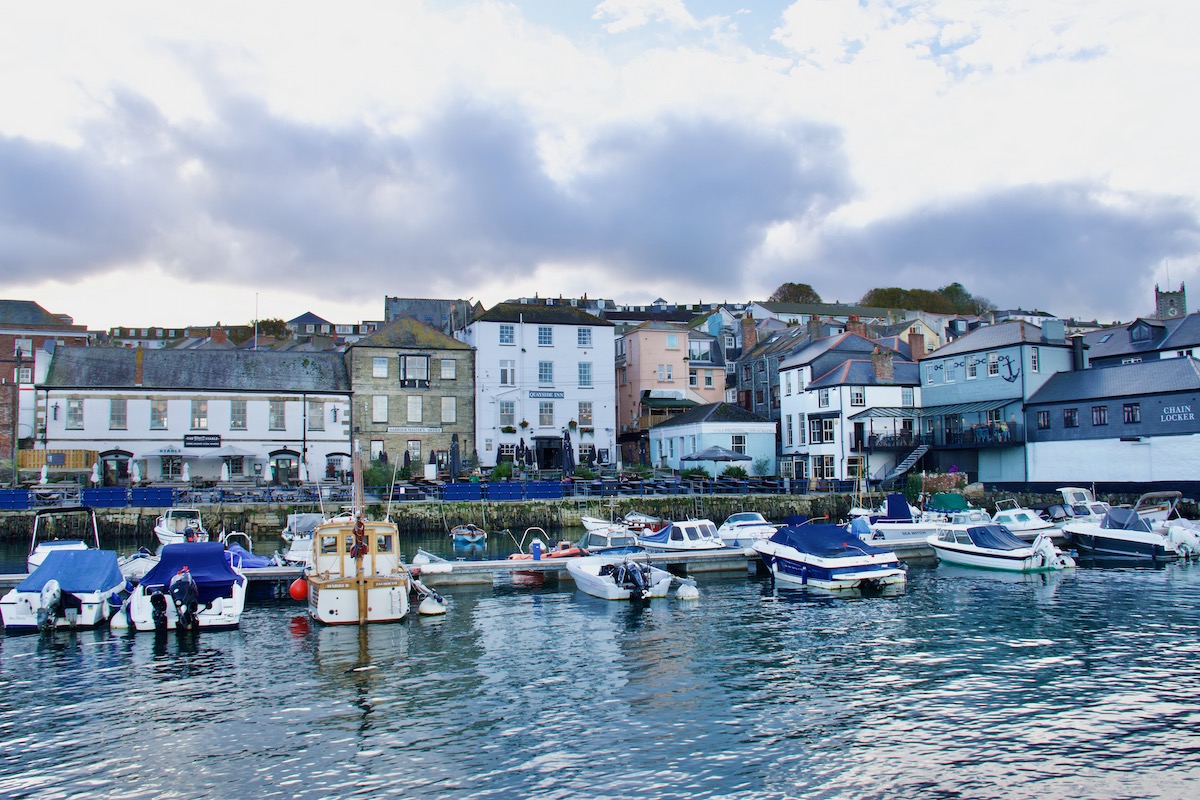
But, the decline of the packet service did not interrupt the steady stream of visitors to Falmouth. But it was the arrival of the railway in 1863 really opened up Falmouth as a holiday destination. The local town council was quick to supplement its natural amenities with promenades and gardens. Today, this charming little town boasts some delightful attractions using old buildings that reflect its maritime history and its growth as a tourist destination during the Victorian era when sea bathing became very popular. Falmouth was also a haven for smugglers, in particular contraband tobacco as evidenced by the King’s Pipe on the Custom House Quay.
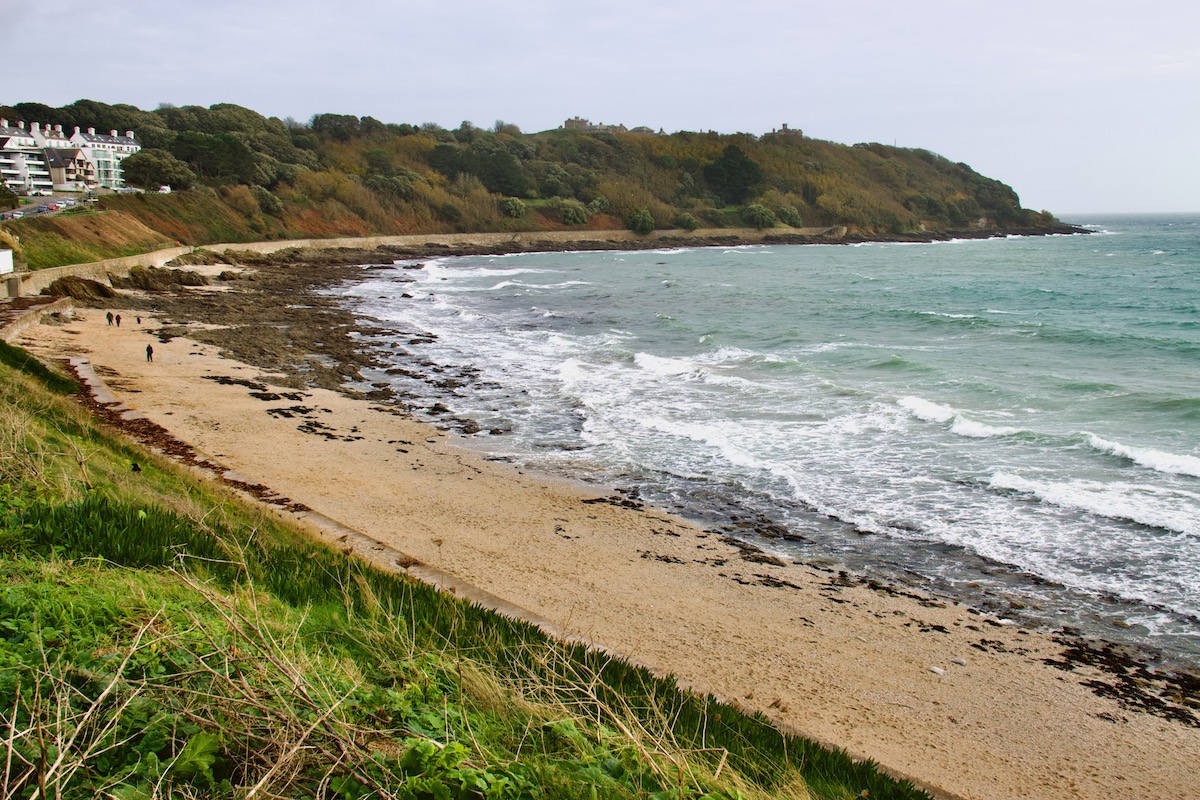
The King’s Pipe and Custom House in Falmouth, Cornwall
Known locally as the King’s Pipe this old furnace was used for the public burning of contraband tobacco. It was built in 1814 during a burgeoning in the number of merchant ships arriving in Falmouth bringing an increasing variety of goods. Taxation on imports and exports was at a record high to provide funds for wars abroad. Inevitably this meant smuggling became more prolific and the government had to take action. His Majesty’s Customs in Falmouth (responsible for collecting taxes and preventing smuggling) was relocated to a new Custom House, a converted warehouse, on Custom House Quay. This gave the Customs service a presence on the busy waterfront and was the ideal location for a tobacco furnace. Falmouth was a tobacco port and the only one in Cornwall licensed for the importation of tobacco. It had a legal duty to burn contraband tobacco in public. A furnace was created using an old granite water reservoir with a stepped brick chimney on top next to the new Custom House. The thick, black smoke regularly emerging from this chimney could be seen for miles around – a deterrent to would-be smugglers. Today the King’s Pipe still stands proud on Custom House Quay and the Custom House is home to The Stable restaurant that offers really good pizzas and some excellent ciders. Further around the harbour is the Discovery Quay, home to the National Maritime Museum.
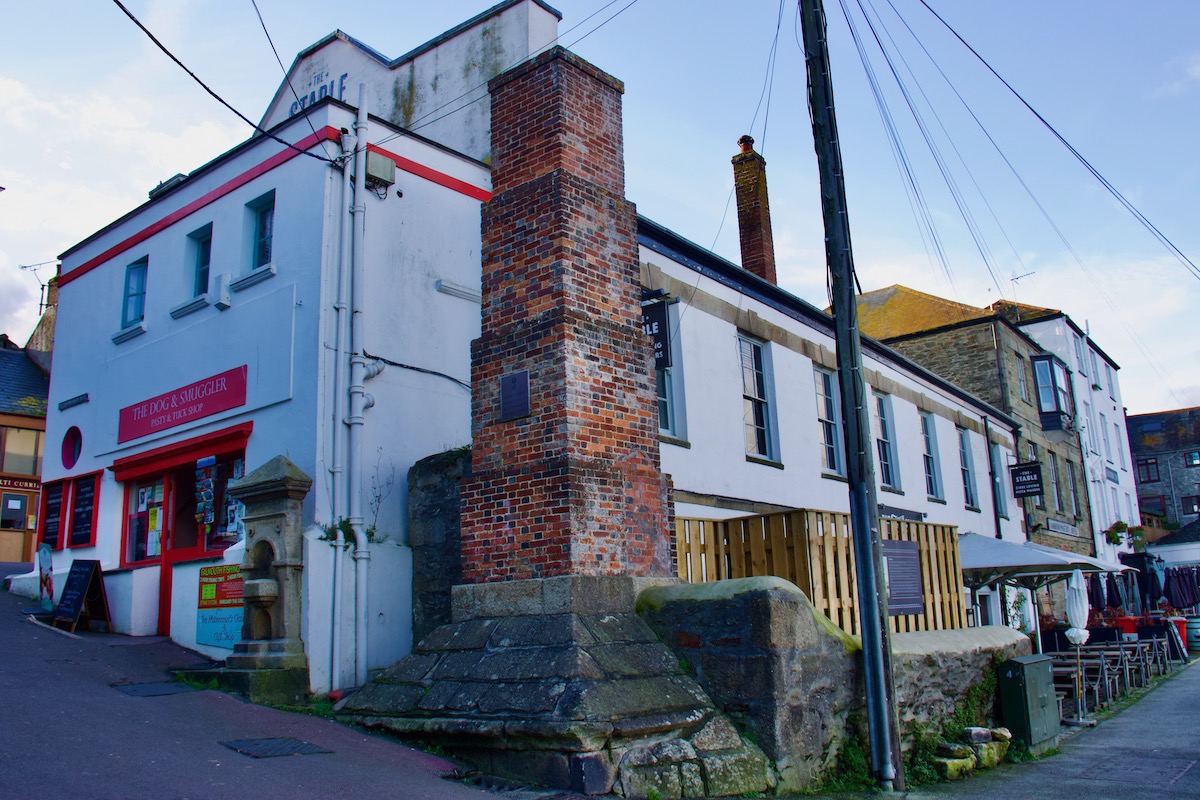
The National Maritime Museum in Falmouth, Cornwall
A very popular attraction in Falmouth, the National Maritime Museum occupies a custom-built home that resembles a large warehouse with a lighthouse at one end. It was inspired by the sheds of boat builders that once stood on this site. A boatbuilding workshop occupies one of its fifteen galleries – a centre of excellence for restoring, conserving and repairing traditional boats. Amongst its several collections is the National Small Boat Collection. It was moved here from the National Maritime Museum at Greenwich and is exhibited as a flotilla hanging from the ceiling. The Cornish Galleries on three floors relate the maritime history of Cornwall.

Five floors in the tower at the far end feature an underground gallery with windows on the sea and a look-out at the top. Temporary exhibitions and workshops are also a feature of this excellent museum. Take a break in the café which offers a wide range of snacks and light lunches and browse the shop before you leave. Across the road from the museum is the secluded Arwenack House, the oldest property in Falmouth.
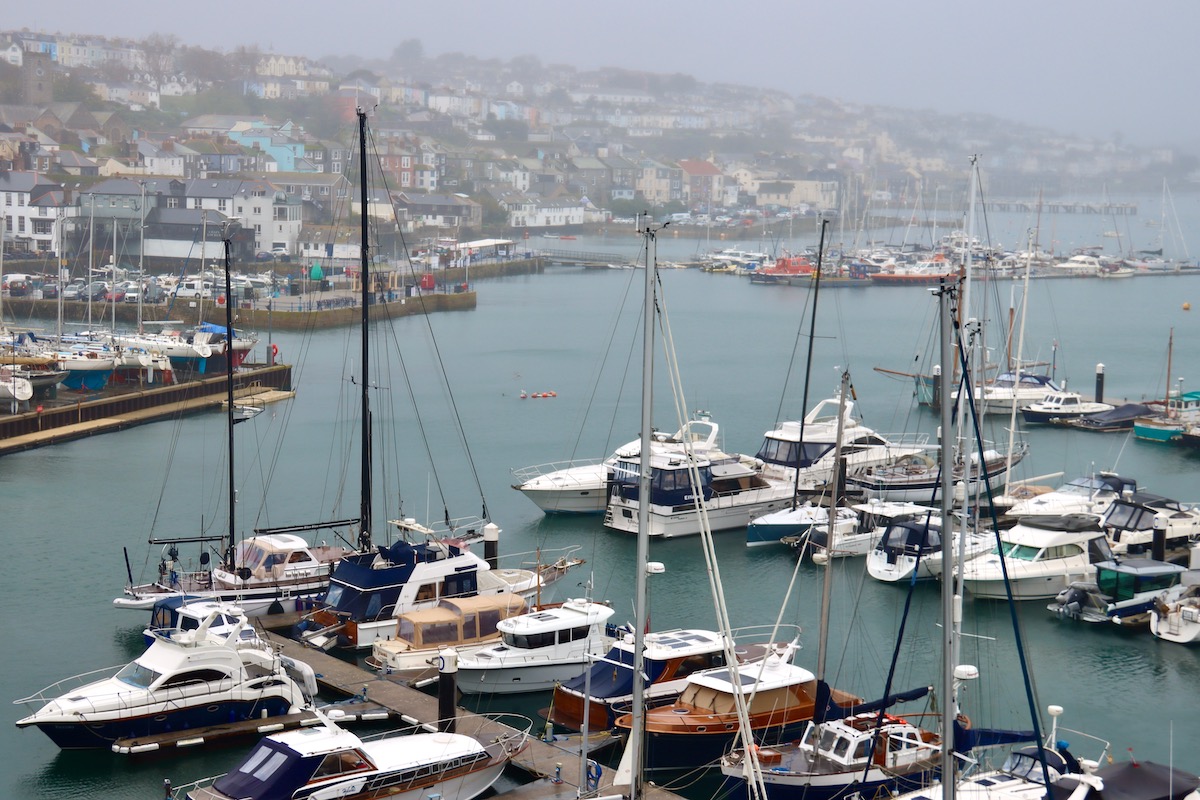
Arwenack House in Falmouth, Cornwall
Set back from the road behind a stone wall Arwenack House was originally built in 1385 and then enlarged and extended around 1567 to 1571. This house was home to sixteen generations of the Killigrew family once the most powerful family in Cornwall. It was a member of this family, Sir John Killigrew who created the port and town of Falmouth in 1613 on land he owned here. He was inspired by Sir Walter Raleigh, a visitor to his home, who said the location was the perfect place for a port. Arwenack House was badly damaged during the English Civil War when it was used by the Roundheads besieging Pendennis Castle. King Charles II subsequently granted a Charter granting rights to the citizens of Falmouth to thank them for defending Pendennis Castle. In gratitude for this boost to the town’s importance the citizens built a church dedicated to the king’s father, the Church of King Charles the Martyr. Arwenack House was rebuilt in 1786 by Peter Killigrew but the Killigrew family was running out of heirs and the line ended with his successor. The family home fell into disrepair but was restored during the 1980’s. Pendennis Castle tops the hill, Pendennis Point, beyond Arwenack House.
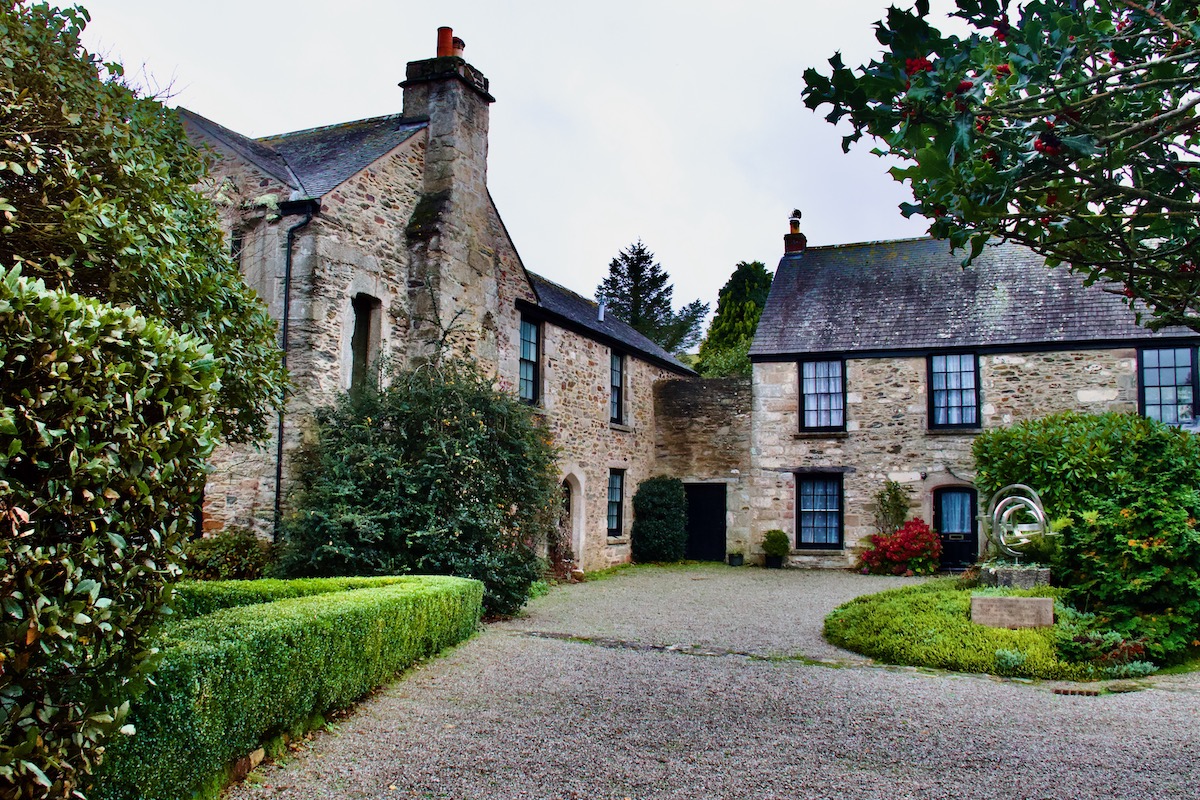
Pendennis Point and Pendennis Castle in Falmouth, Cornwall
Perched on the top of Pendennis Point, a rocky headland above Falmouth, is Pendennis Castle. This Tudor fort was built during the reign of Henry VIII between 1539 and 1547 as part of his coastal defences. It was built to defend Falmouth Harbour and Carrick Roads an important anchorage in the Fal estuary critical to any potential invaders of England. Its distinctive circular shape was designed for defending attacks from sea and land. Due to its strategic position this castle has played a key role in the English Civil War and both World Wars. An English Heritage property, Pendennis Castle features some spectacular guns and some of them are in action on firing days. Below the castle is one of Falmouth’s beautiful beaches, Castle Beach. The promenade skirting this beach also passes by Gyllyngdune Gardens.
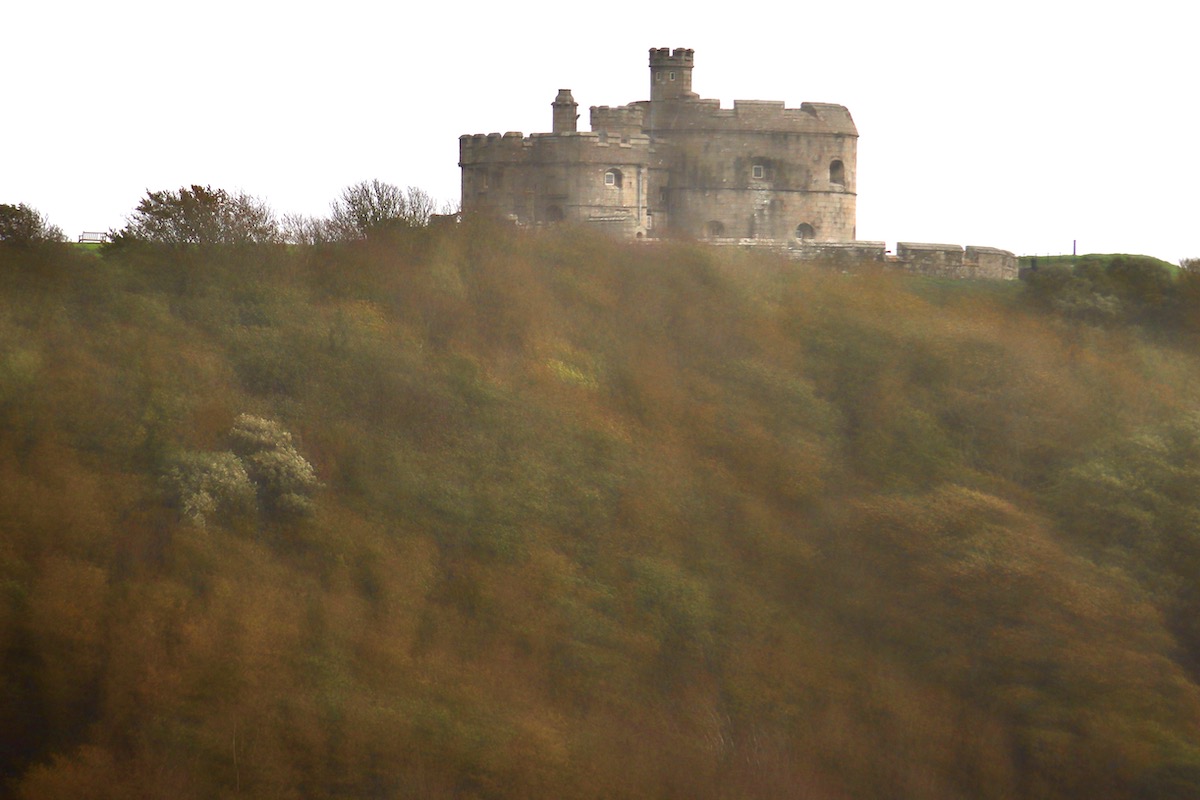
Gyllyngdune Gardens in Falmouth, Cornwall
Completed in 1907, the original Gyllyngdune Gardens featured an Edwardian bandstand, a greenhouse, a monolithic arch and a grotto established in an old quarry showcasing exotic plants. The Princess Pavilion, surrounded by a covered veranda, was added in 1910. These gardens were rescued from a dilapidated state by a grand scheme costing around £2.7 million. Most of the money came from the Heritage Lottery. This has restored the ambience of these lovely gardens through the removal of surplus vegetation, the relaying of paths and restoration or rebuilding of the original features. Once again children can play in the natural play area featuring Morgawr, Falmouth’s mythical sea creature. The Princess Pavilion is not just at the heart of these gardens but also a hub of entertainment in Falmouth and its café an ideal venue for a mid-morning coffee and cake. Trains on the Maritime Line run regularly between Truro and Falmouth the Falmouth Docks station is close to the gardens. Across the road from the gardens is a small building resembling a chapel.
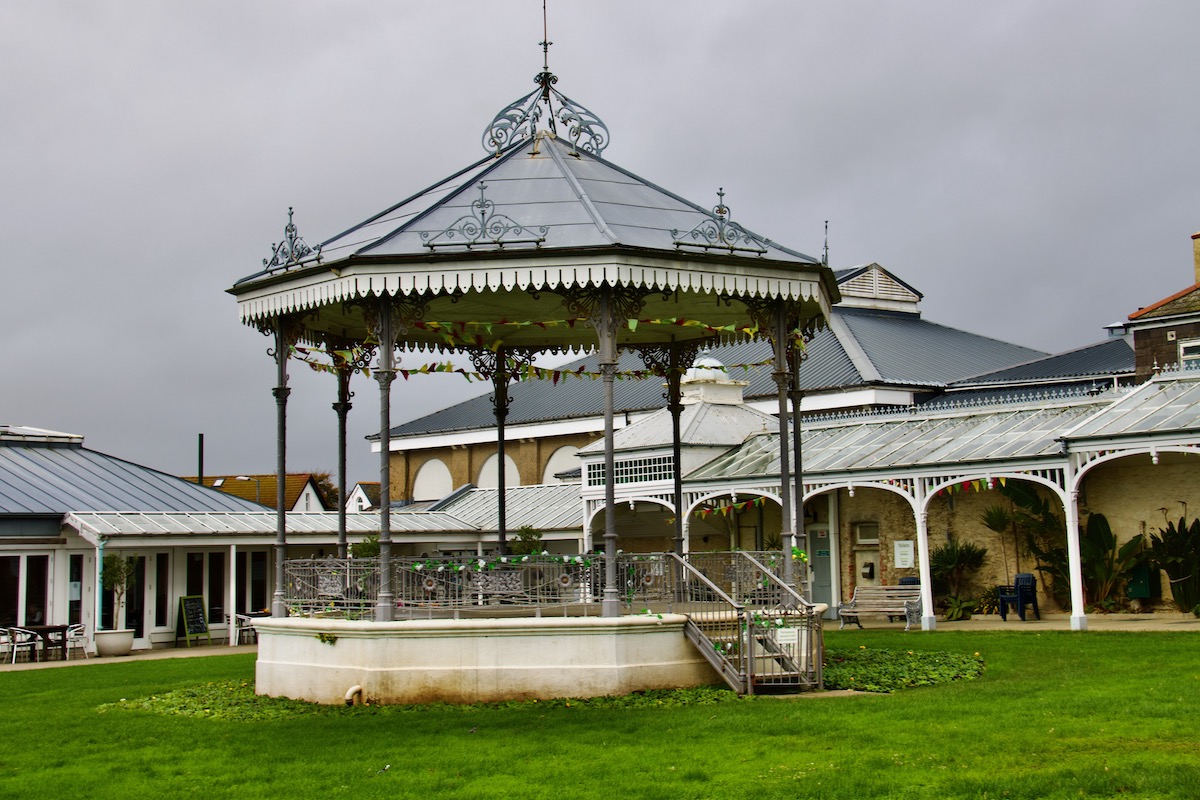
Known as the Cliff Road Chapel this odd little building sits on an elevated terrace with a tunnel passing beneath it. Although it was built as a summerhouse for the Gyllingdune Estate in the 1840s it could have been used as a chapel but it was never consecrated. It has a fish scale slopping roof and it is surrounded by a red balustrade. The latter feature is repeated around some stone steps close by which give access, via a narrow tunnel, to the rock strewn Tunnel Beach. Beyond this beach is a large sandy cove, Gyllyngvase Beach. This award winning beach features the Gylly Beach Café. Built over the beach this café is open all year and has great views from its sun terrace. The narrow cobbled streets around Falmouth Harbour offer a complete contrast to the natural beaches around the town.
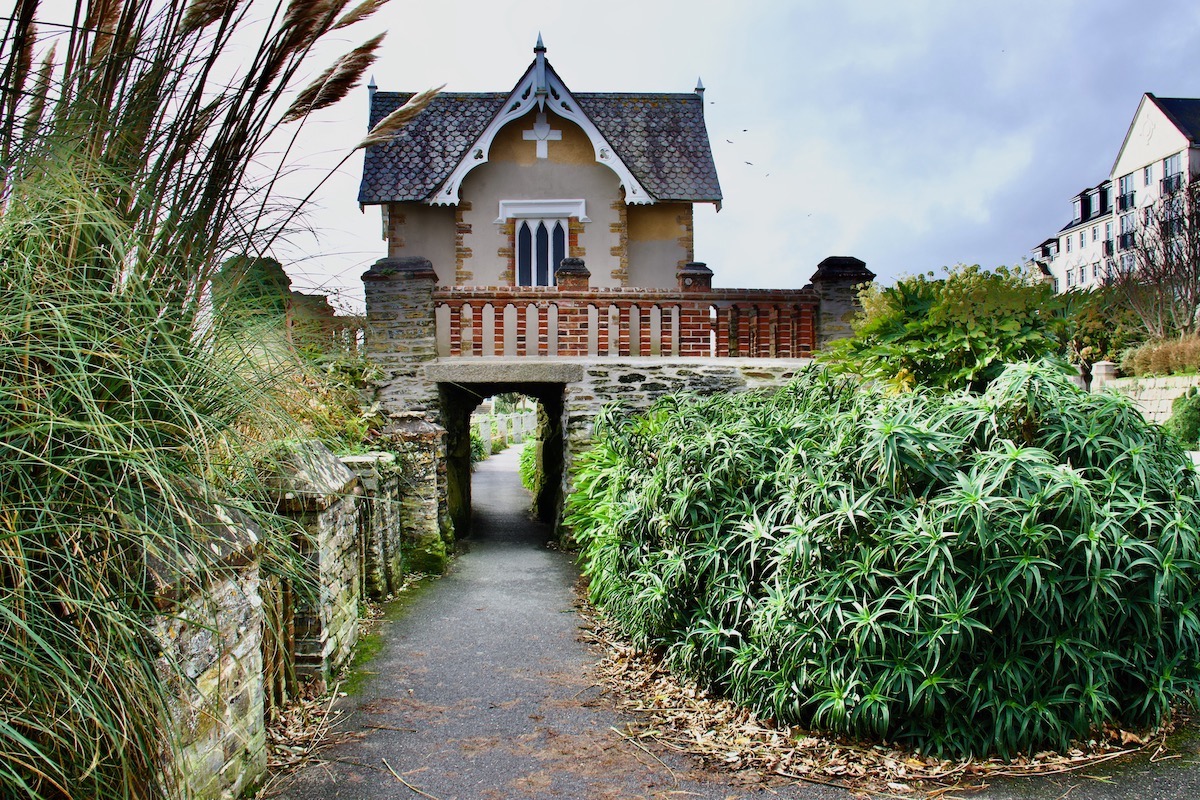
Browsing and Eating in Falmouth, Cornwall
Falmouth has one long shopping street that runs parallel to the harbour although it is actually three streets that run into each other – Arwenack Street, Church Street and Market Street. Independent shops, art galleries, cosy cafés and classy restaurants line this street. Local bakeries offer tasty favourites and colourful cafés invite you in to enjoy a Cornish Cream Tea. Enjoy a crusty homemade pasty from the Cornish Bakery on Arwenack Street, dine Chinese-style at Mings Garden based in an old bank building on Church Streeet or pose over a posh pastel-coloured cocktail at Lawrance’s Bakery & Bar on Discovery Quay. For fans of retro clothes and artefacts the Retro Charity Shop run by Cornwall Hospice Care is a treasure trove of items you never knew you needed. Fish and chips are a popular option for lunch or supper and Harbour Lights overlooking Custom House Quay offers both take-away and eat-in options.
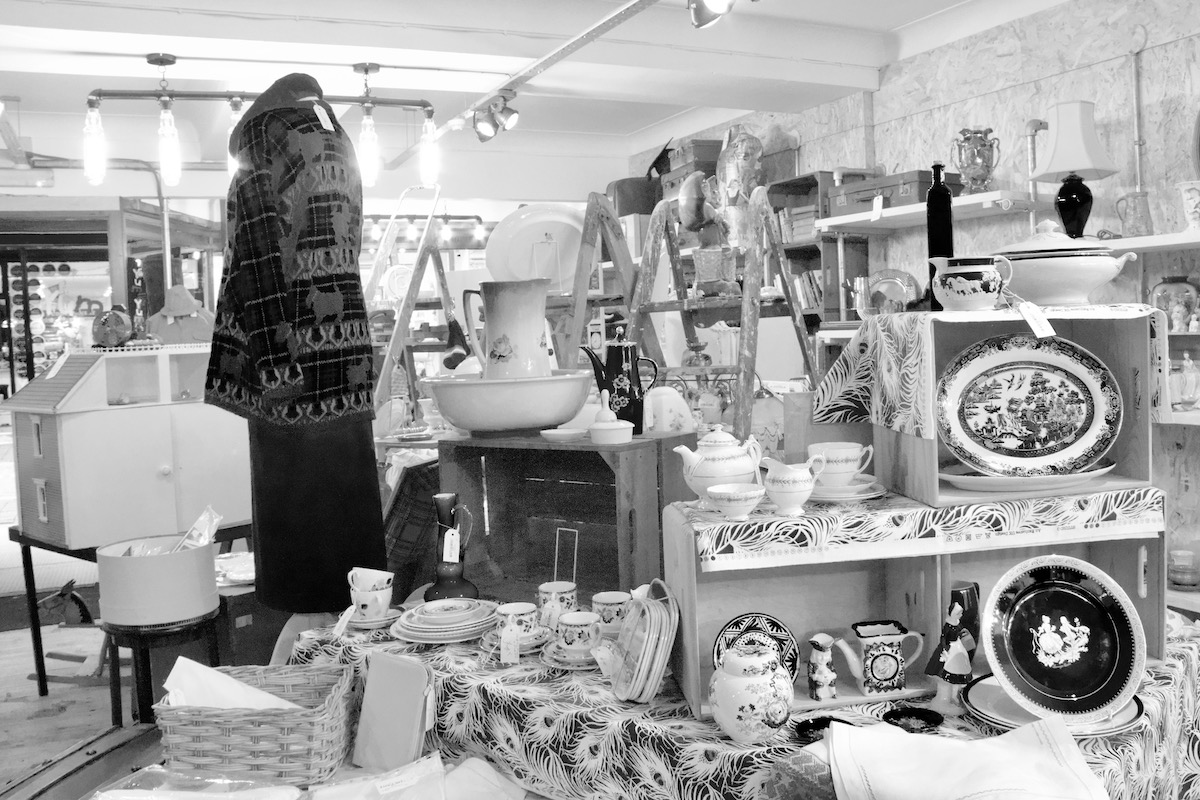
A popular shopping area is the quaint St George’s Arcade built inside an old cinema. When St George’s Hall opened in 1912 it was the largest cinema in the country. It operated as a cinema until it was damaged by a fire in 1948 and closed down. What was left of the auditorium was repaired and the shopping arcade was built inside, behind the original decorative façade. A night club occupies the upper floor. Just beyond this arcade is an area known as The Moor.
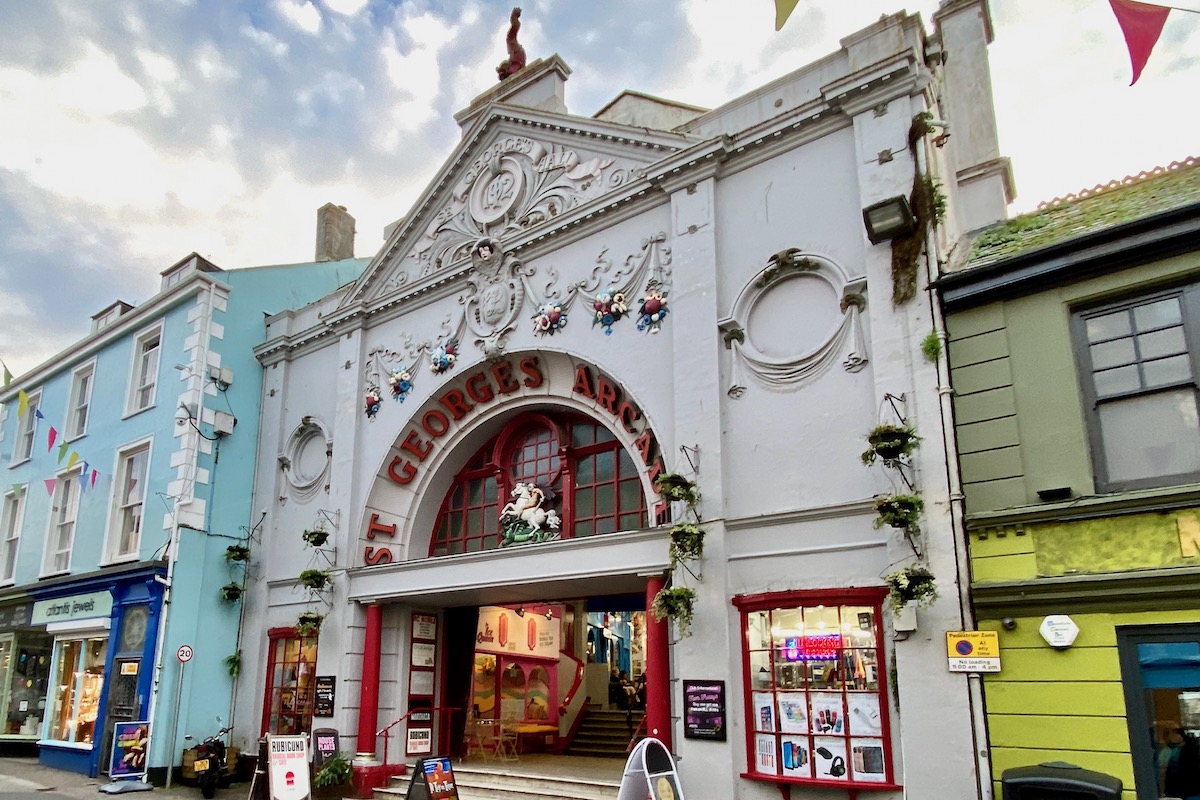
The Moor in Falmouth, Cornwall
The paved piazza known as The Moor today was originally marshland with a stream flowing through it. Once the waterfront of Falmouth was fully developed the only way the town could expand was by going inland. So, in the early nineteenth century the marsh was drained and The Moor was established and soon became a focal point of the town. It is surrounded by some grand old buildings. One of these is the Passmore-Edwards municipal building now home to a library and the award winning Falmouth Art Gallery. John Passmore Edwards was a Cornish journalist and philanthropist who provided money for seventy public buildings across Cornwall and London in the latter half of the nineteenth century. A champion of the working classes these buildings were all freely available to ordinary people. Passmore-Edwards buildings are usually distinguishable by the inscription of his name on the stone or brick work. On the other side of The Moor is the former Town Hall and Fire Station which replaced the original, much smaller Town Hall in the High Street. This Town Hall was built in 1864 and a fire station was added thirty-one years later in Italianate style. Today this elegant building houses the diner, Palacio Lounge.
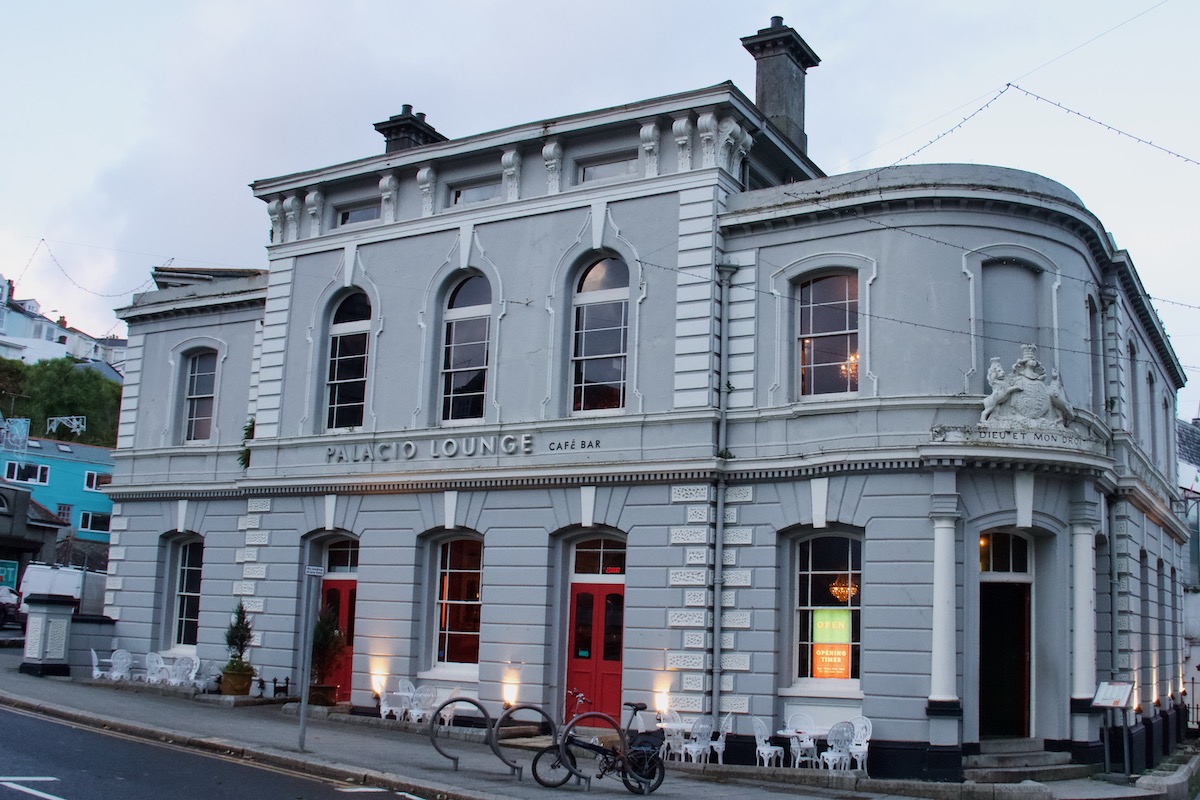
The impressive Falmouth Central Methodist Church on Killigrew Street, across from the Moor has been at the centre of the Methodist community for hundreds of years. But, recently, due to a failure to find funds to repair the roof that was damaged in a gale in 2008, it was sold. The new owners aim to combine community use of the old church space with the provision of two commercial outlets and residential properties. In the centre of The Moor is the Packet Monument erected in 1898. This granite obelisk is inscribed “To the Memory of the Gallant Officers and Men of H M Post Office and Packet Service sailing from Falmouth 1688-1852.” The paved piazza around this monument is a popular venue for markets and other outside events. There is always something going on in Falmouth.
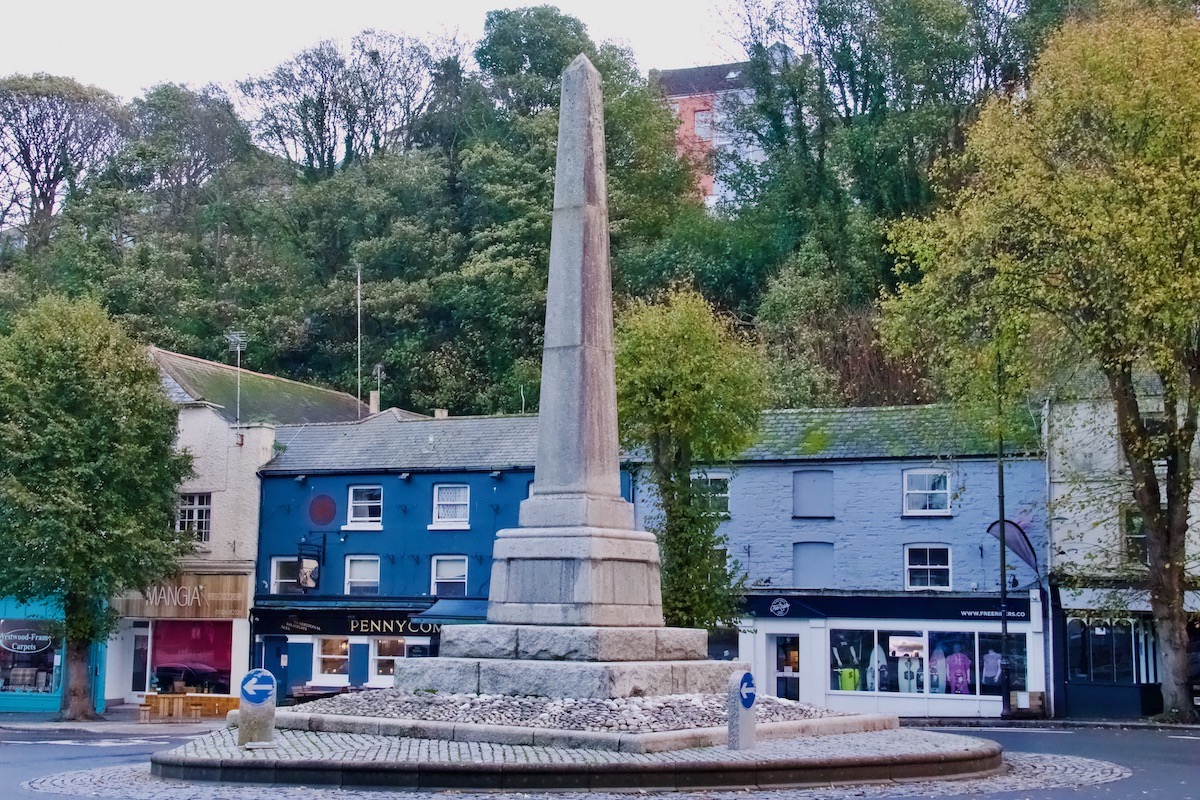
More information about the attractions mentioned in this article is available on the Visit Falmouth website.
Where to Stay in Falmouth, Cornwall
Self-catering accommodation is a great option in Falmouth given the numerous good cafés, restaurants and bars plus shops bursting with delicious local produce. An ideal property for families or small groups of friends is the four-bedroomed, two-story apartment Thalassa. It is situated just off the main shopping street and has a large balcony at the rear overlooking Falmouth Harbour. All the main attractions and beaches are within walking distance. And, after a busy day exploring the area enjoy a sundowner watching the activity in the harbour below. This property is managed by Aspects Holidays.
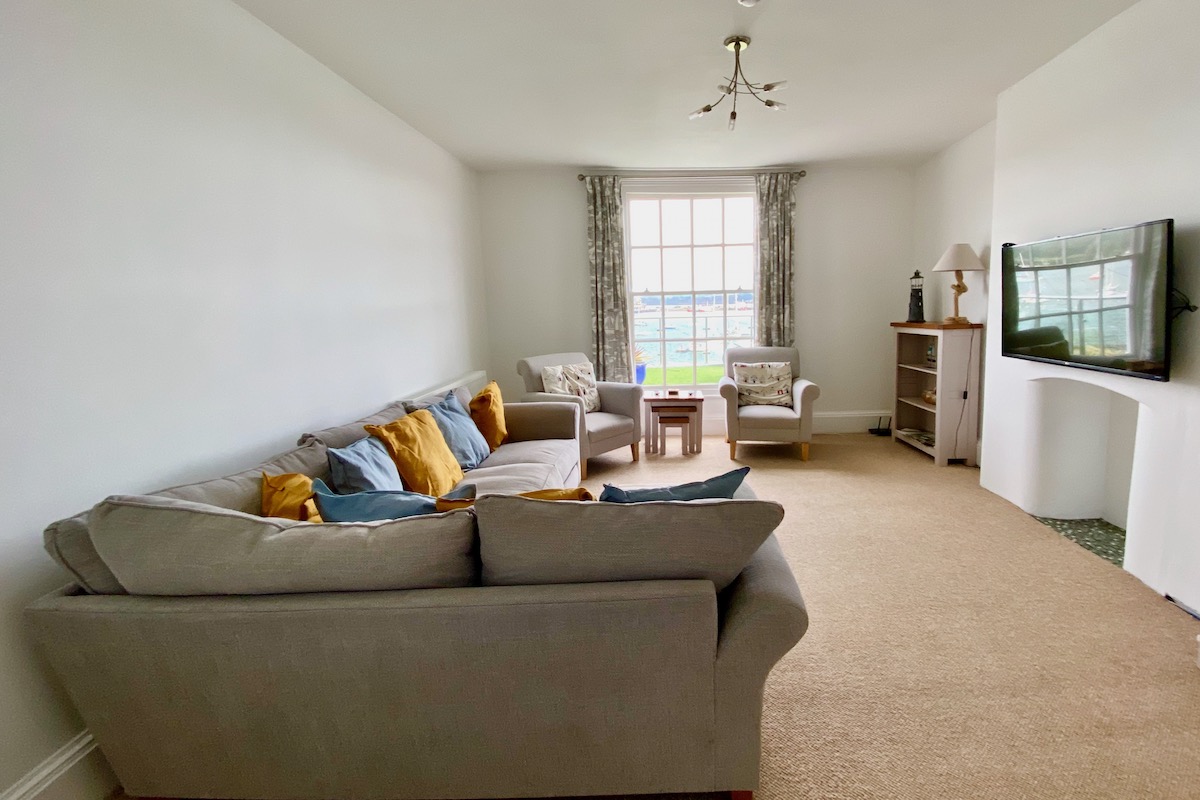
Available on GPSmyCity.com
This article is now featured on GPSmyCity. To download this article for offline reading or travel directions to the attractions highlighted in this article, go to Walking Tours in Falmouth on GPSmyCity
Valery Collins is the Experienced Traveller
 An excellent raconteur, Valery has been writing about her experiences on the road since she started travelling 25 years ago. After publishing four books she turned to online travel writing.
An excellent raconteur, Valery has been writing about her experiences on the road since she started travelling 25 years ago. After publishing four books she turned to online travel writing.